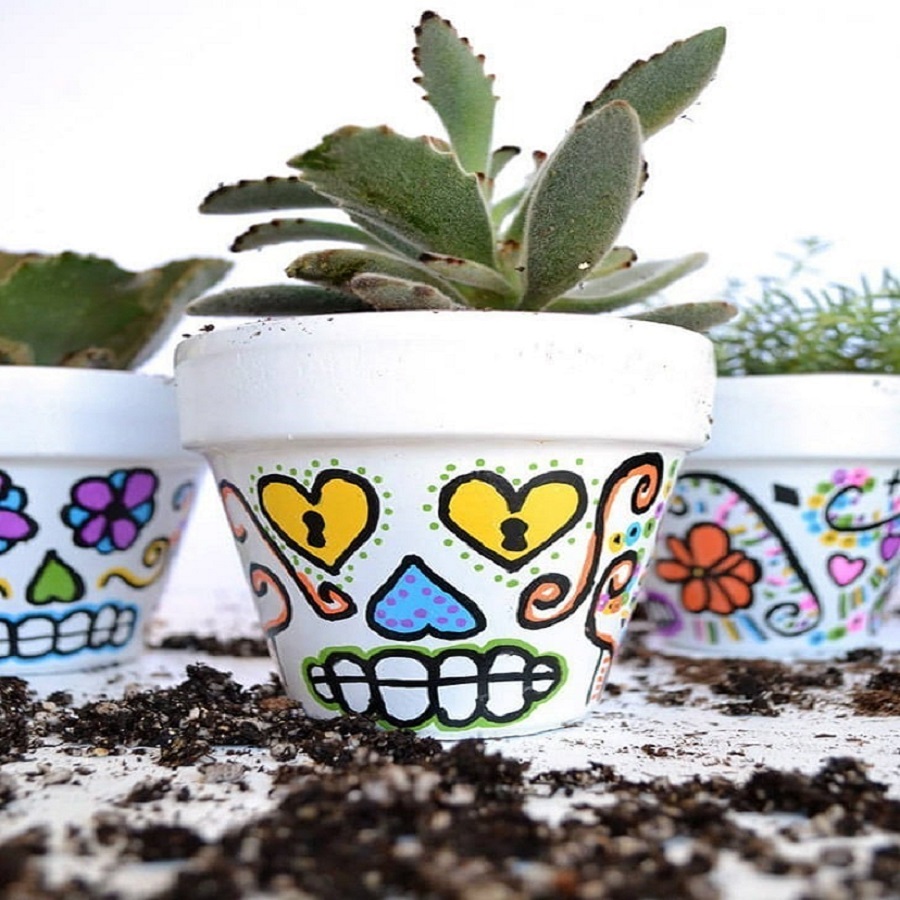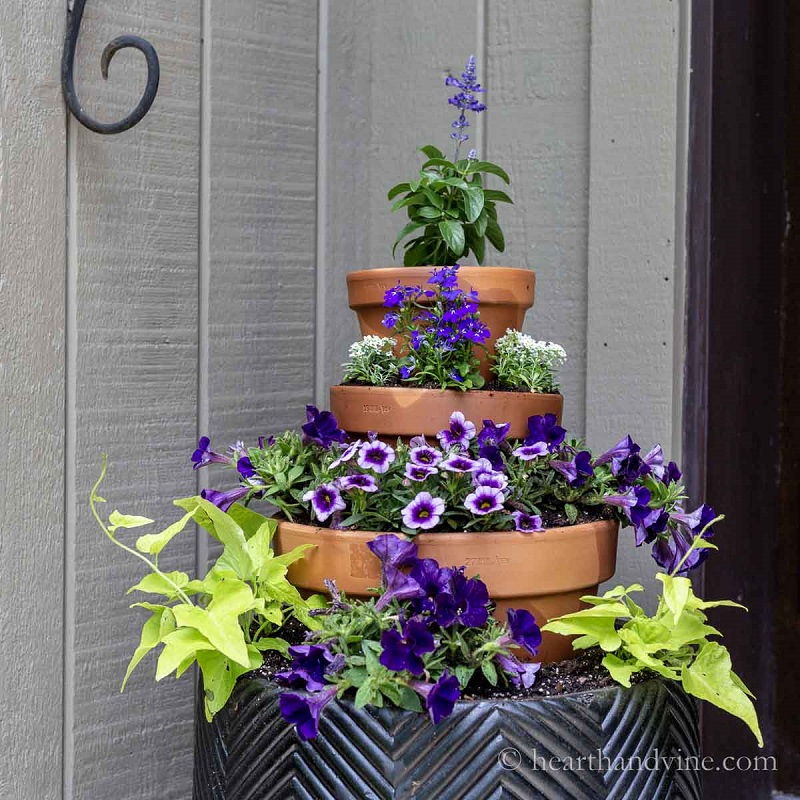Creating your own flower pots can be a rewarding and fun way to personalize your garden or indoor space. Not only does DIY allow you to express your creativity, but it also enables you to reuse materials and save money. In this article, we’ll explore various creative ideas for DIY flower pots, offering inspiration and practical tips for crafting beautiful containers that showcase your favorite plants.
Understanding the Basics of DIY Flower Pots
Why Choose DIY Flower Pots?
DIY flower pots offer numerous advantages over store-bought options. First and foremost, they allow for complete customization in terms of size, shape, color, and design. You can use materials that resonate with your personal style or even reflect the theme of your garden. Additionally, engaging in DIY projects is environmentally friendly, as you can repurpose items that might otherwise end up in a landfill. This not only saves you money but also encourages sustainable practices.
Moreover, making your own flower pots can be a therapeutic and fulfilling experience. It presents an opportunity to unwind, engage your hands creatively, and spend time in a rewarding hobby. Whether you’re a seasoned gardener or just starting, creating DIY flower pots can enhance your gardening experience by adding a personal touch to your plants’ homes.

Materials You Can Use
When embarking on your DIY flower pot journey, the first step is to choose the right materials. The possibilities are nearly endless. Common materials include:
- Terracotta: A classic choice known for its breathability. Terracotta pots can be painted or decorated easily.
- Wood: Reclaimed wood or wooden pallets can be transformed into rustic planters. Just ensure they are treated properly to withstand moisture.
- Plastic: Old containers or plastic bottles can be cut and painted to create unique pots. They’re lightweight and versatile.
- Metal: Cans, buckets, or old kitchen utensils can provide a modern or industrial look when repurposed as flower pots.
- Ceramic: Old ceramic dishes or bowls can become charming flower pots, especially when glazed in vibrant colors.
Each material offers unique characteristics and aesthetic qualities, allowing you to select what best fits your vision.
Upcycled Containers for Unique Flower Pots
Transforming Everyday Items
One of the most creative ways to make flower pots is by upcycling everyday items. This not only reduces waste but adds a unique flair to your garden. For instance, consider using old teacups or saucers. These delicate items can be painted or left as-is for a vintage look. Simply drill a small hole for drainage, fill them with potting soil, and plant your favorite flowers.
Another excellent option is to use old shoes. An unused pair of boots or sneakers can make for quirky and charming planters. They add character to your garden while providing ample space for plants. Just remember to ensure proper drainage to keep the roots healthy.
Using Wood Pallets
Wooden pallets are incredibly versatile and can be transformed into stunning flower pots or vertical gardens. You can disassemble a pallet and create individual planter boxes, which can be painted or stained according to your aesthetic preference. Alternatively, standing the pallet upright and filling the slats with soil and flowers creates a striking vertical garden that saves space while maximizing plant exposure to sunlight.
Wooden pallets not only provide a rustic charm but also serve a practical purpose, allowing for easy maintenance as the flowers grow.

Painting and Decorating Your Flower Pots
Choosing the Right Paint
Once you have your pots ready, painting them can significantly enhance their visual appeal. When selecting paint, opt for outdoor-quality paint if the pots will be placed outside. Acrylic paints work well for terracotta and ceramic pots, while spray paint can create a smooth finish on plastic or metal surfaces. Remember to start with a clean surface; washing the pots before painting ensures that the paint adheres properly.
Creative Decoration Techniques
Beyond basic painting, there are numerous decoration techniques you can employ to personalize your flower pots. Decoupage is a popular method where you apply decorative paper or fabric onto the pot’s surface using a glue medium. This technique allows you to incorporate patterns, pictures, or textures that match your garden theme.
Stenciling is another fun option for adding designs or quotes to your pots. Simply use stencils and paint to create intricate designs that reflect your personality. You could also consider using natural elements such as twine, moss, or stones to wrap around the pots for added texture and interest.
Vertical Gardens: Maximizing Space
Creating Vertical Flower Pots
For those with limited space, vertical gardens present an excellent solution. They allow you to cultivate a variety of plants without sacrificing square footage. You can construct vertical flower pots using a wooden frame with multiple shelves or tiers. By placing smaller pots on each tier, you can create a cascading effect that’s visually stunning.
Hanging pots are another innovative option. Using hooks or wall-mounted brackets, you can hang pots from walls or fences, creating an eye-catching focal point in your garden. Choose trailing plants to enhance the cascading look, adding both depth and movement to your garden space.
Benefits of Vertical Gardening
Vertical gardening not only saves space but also enhances airflow between plants, which can reduce the risk of pests and diseases. It allows for better sunlight exposure, ensuring that all plants receive adequate light. Moreover, vertical gardens can add height and dimension to your landscape, creating an engaging and lively atmosphere.
Herb and Vegetable Planters
Designing Functional Planters
If you’re passionate about gardening, why not incorporate herbs and vegetables into your DIY flower pots? Designing functional planters specifically for edible plants can be both beautiful and practical. Consider using tiered planters to grow a variety of herbs, such as basil, parsley, and thyme. This design not only maximizes your gardening space but also provides easy access to fresh ingredients for your meals.
Companion Planting Techniques
When planting herbs and vegetables, consider companion planting techniques. Certain plants thrive together and can help deter pests naturally. For instance, planting marigolds alongside vegetables can repel aphids and nematodes. Creating a companion planting layout in your DIY pots not only helps protect your plants but also adds diversity and vibrancy to your garden.

Seasonal Decorations for Flower Pots
Embracing Seasonal Themes
Your flower pots can be a canvas for seasonal decorations that celebrate different times of the year. For example, during spring, consider adding bright colors and pastel shades to reflect the blooming season. You can even use themed decorations such as Easter eggs or bunnies to enhance the festive spirit.
In summer, vibrant colors and tropical themes can bring life to your pots. Adding beach-themed decorations like seashells or sand can evoke a coastal feel. For fall, consider using warm hues and adding mini pumpkins or autumn leaves to create a cozy atmosphere. Winter brings the opportunity for holiday decorations, where you can adorn pots with evergreen branches, ornaments, or even fairy lights for a magical touch.
Rotating Decorations
To keep your flower pots fresh and exciting, consider rotating your seasonal decorations. This practice allows you to change the look of your garden throughout the year without having to invest in new pots. By simply swapping out decorations, you can maintain a dynamic and engaging space that reflects the changing seasons.
DIY Flower Pots for Kids
Engaging Children in Gardening
Getting children involved in gardening can be a wonderful bonding activity, and creating DIY flower pots is a great way to inspire their creativity. Simple projects like painting terracotta pots or decorating plastic bottles can be fun and educational. Explain the importance of plants and gardening while allowing them to express their artistic side.
Choosing Kid-Friendly Plants
When selecting plants for children’s DIY pots, opt for low-maintenance, fast-growing options. Sunflowers, marigolds, and certain herbs like mint are great choices. They thrive with minimal care, providing instant gratification as children see their efforts bloom. Additionally, these plants can foster a sense of accomplishment and pride in their gardening skills.
The Importance of Drainage in Flower Pots
Ensuring Healthy Root Systems
A crucial aspect of DIY flower pots is ensuring proper drainage to maintain healthy root systems. Without adequate drainage, excess water can lead to root rot and other plant diseases. Always drill holes in the bottom of your pots if they don’t already have them. This allows excess water to escape, preventing the soil from becoming waterlogged.
Layering for Optimal Drainage
In addition to providing drainage holes, consider layering materials in your pots. Start with a base layer of small stones or gravel at the bottom to facilitate drainage. On top of this layer, add landscaping fabric to prevent soil from escaping while still allowing water to flow through. Finally, fill the pot with high-quality potting soil, ensuring that you provide your plants with the best growing environment possible.
Final Touches: Personalizing Your Garden
Adding Labels and Signs
Once your flower pots are ready and planted, consider adding personalized labels or signs. This simple addition can enhance the overall aesthetic of your garden while helping you keep track of your plants. Use wooden stakes, chalkboard paint, or decorative stones to create labels for each pot. Not only does this add a charming touch, but it also helps guests identify the various plants in your garden.
Creating a Cohesive Look
To achieve a cohesive look in your garden, consider using a consistent color scheme or theme across your DIY flower pots. This can tie the entire space together, creating a harmonious and visually pleasing environment. Whether you choose to go bold with vibrant colors or stick to a more neutral palette, maintaining consistency will elevate the overall design of your garden.
Conclusion: Unleash Your Creativity
In conclusion, DIY flower pots offer endless opportunities for creativity and personalization in your gardening endeavors. From upcycling everyday items to experimenting with paint and decorations, the process of crafting your own pots can be both enjoyable and rewarding.
By incorporating various techniques, such as vertical gardening and seasonal themes, you can transform your garden into a vibrant and dynamic space. Whether you’re gardening with children, designing edible planters, or simply expressing your unique style, the possibilities are limitless.